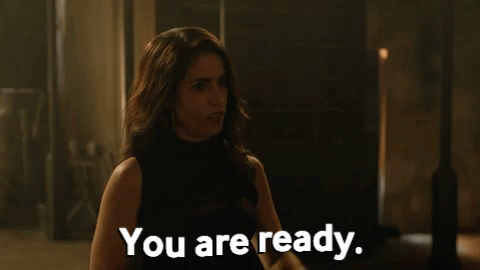Sharing your expertise through conference presentations is a wonderful professional development experience, and it looks great on a resume.
A barrier to having this experience lies in the program proposal application, but it doesn’t have to be challenging to fill out!
As someone who has submitted, evaluated, selected, and presented many program proposals at both live and virtual conferences, here are my top tips for writing an awesome program proposal that’ll likely be accepted.
8 Tips
1. Keep it simple
From the title to the abstract, use common language throughout the application, free of frivolous acronyms or research-specific jargon that can’t be easily explained in the abstract; save the latter for the presentation itself.
Address the questions being asked; don’t add extra content or forget to address any portion of the application. Finally, many co-presenters listed in the proposal can be overwhelming, both for the proposal reviewers and for conference attendees. So try to keep the number of co-presenters to 2-3 max.
2. Don’t disregard the importance of titles
Aim to make your title engaging, rather than attempting to summarize your entire presentation. Connect your title to the conference theme or trends within higher education. Look back at your own personal experiences; what sorts of titles have captured your attention most?
Powtoon outlines the top 5 principles or ideas you could incorporate when writing an effective presentation headline:
Addressing your specific audience,
- Highlighting the specific benefit or outcome,
- Highlighting the specific issue the participants want to avoid,
- Creating curiosity
- Adding urgency
Using a presentation proposal about Yorkshire Terriers as an example, here are a few basic and better titles using the principles outlined by Powtoon:
- Basic: Why Yorkshire Terriers are the Best Dogs
- Better: Why Yorkshire Terriers are Best Suited for Students Living in University Housing (addresses your specific audience)
- Basic: Yorkshire Terriers Provide Amazing Health Benefits
- Better: Learn How Yorkshire Terriers Can Lower Your Stress & Increase Your Happiness (highlights the specific benefit or outcome)
- Basic: How to Train your Yorkshire Terrier to Avoid Issues Down the Road
- Better: Want to Stay out of the Doghouse? Try These Tips for Yorkshire Terrier Training Today! (highlights the specific issue to avoid and creates urgency)
- Basic: Me & My Dog
- Better: How One Yorkshire Terrier Changed My Life Forever (creates curiosity)
An additional tip includes adding the number three to your title. Listing things in threes creates a beginning, a middle, and an end; the number three is a powerful tool for creating harmony and understanding. With three main points, you’ll be able to go deeper into each point.
- Basic: Tips for Training Your Yorkshire Terrier
- Better: The Three Best Tips for Training Your Yorkshire Terrier Like a Pro (uses the number three)
3. Use the S.M.A.R.T. Method
Program proposals should paint a picture for the reviewers. Stating the specific benefits of your program is key. Sharing goals and learning objectives is important, but you should go beyond that. Articulate how your program will achieve those objectives.
Make a compelling case for why your content should be included in the conference lineup. Then, create a vivid picture of how your proposed plan will be laid out.
You can do this all by framing your concept so that it is specific, measurable, attainable, realistic, and time-bound — aka the SMART method.
Let’s put this into the context of student affairs!
Using the program proposal “Three Ways to Teach Mindfulness and Increase Students’ Happiness and Satisfaction,” here is an example of using the SMART method to articulate why your program should be included:
After attending the session, “Three Ways to Teach Mindfulness and Increase Students’ Happiness and Satisfaction,” participants will walk away with three relatable and effective ways to teach mindfulness to their students (specific and attainable since you’re explaining exactly what you’ll be presenting; three tips is more attainable to discuss & dive deep into). The information shared in this session will come directly from research-backed journals, articles, and scholars working in the fields of mindfulness-based stress reduction, conflict management, and more (measurable as the tips are backed by experts). While the session focuses are mindfulness practices and the happiness and satisfaction for students, the information shared will be applicable to all attendees (attainable for all participants). Participants will walk away with a worksheet that outlines web resources, books, linked articles, meditative practices (resources provide a measurable way to evaluate success). All information can be implemented immediately (time-bound).
4. Explain how this information can be useful to conference participants
While it can be helpful for participants to learn concrete examples of institutions that have successfully implemented your advice, participants will appreciate discovering how the presentation will be useful for them even more.
Looking at the example previously applied, tease out the applicability for all participants.
Basic: While the session focuses are mindfulness practices and the happiness and satisfaction for students, the information shared will be applicable to all attendees.
Better: Tips and resources shared in this session will be specific enough to provide audience members with a strong foundation for teaching mindfulness to their students, but also general enough that the tips and resources can be accessed by attendees and shared with their students, family, and friends. These tips come from well-trusted sources in mindfulness, including [list sources]. In addition to the tips shared in the session, a resource document will be provided for all participants that can be adapted by anyone.

5. Do your research
Conferences often revolve around themes. Do your research ahead of time; review the Call for Programs text, website, and event details. Use language in your proposal that ties back to and connects with the selected theme.
Let the reviewers know that you care enough to put in the work and that the content you’re providing will add direct value to the conference.
6. Contact the reviewers
Most often, Calls for Programs are shared by the conference program coordinators. So, you can reach out to the coordinators and ask for feedback on proposal ideas. Or you could request examples of previous submissions that were either accepted or rejected. Not all coordinators will have access to the information or be able to accommodate your request, but it never hurts to ask!
Don’t wait to do this until the day before programs are due. A good timeframe would be a few days after the initial Call for Programs and no later than one week ahead of the deadline. This should allow coordinators the chance to respond to your request and give you enough time to submit a quality proposal.
7. The early bird gets the worm
Reviewing program submissions is a time-consuming process and is almost always done on a strict timeline. So, do not wait until the deadline to submit your program proposals. Not only will submitting earlier take some of the pressure off of both you and the reviewers, but it will also show them how excited you are about the possibility of presenting.
When the initial Call for Programs comes out, add a deadline reminder in your calendar. Be sure to include all relevant information in this reminder; this may include the proposal submission link, specific proposal guidelines, or additional resources that have been shared by coordinators.
Take a moment to reflect on how you work toward a deadline. Are you someone who likes to finish a project right away or are you someone who needs a closer deadline in order to focus? Based on that self-assessment, set another reminder for when you will begin the proposal. Set time aside in your calendar to work on your proposal and treat it as a mandatory meeting or event.
8. Include takeaways
It’s important for presenters to showcase their content in a way that will add value for the attendees. Be sure to articulate what skills or specific mindset your audience will leave with. Include ideas for material takeaways, learning objectives, references, and how, specifically, attendees can make changes at their own institutions.
Finally, don’t forget: Both regional and national conferences provide the opportunity to share your knowledge with others, but that doesn’t mean they’re the only chance to showcase your wisdom.
There could be additional opportunities for you to present that should be looked into — serving as both extra practice and as a way to add additional presentation experience to your skillset. Does your school offer RA or student leader training? Does your department or division offer professional development opportunities?
If any of these opportunities exist at your campus, submit your name as someone who is willing to lend their expertise to their students or colleagues. Also, many cities offer continued education programs for adults; you can volunteer to present during these as a way to give back to your community while practicing your skills and sharing your knowledge.
If you’re comfortable with social media, create a mini web series or podcast focused on your area of expertise. A number of presentation opportunities exist outside the realm of conference presentations, so explore what’s out there!
And if your program proposal has been accepted and now you want to make your presentation extra awesome, check out these top tips from SkillsYouNeed, the University of Washington, and Visme!

How else have you made your conference proposals extra awesome? We’ll love to hear from you on Twitter; Connect with us @themoderncampus.
And once your proposal has been accepted, check out our recent post for tips on being a stellar presenter!





